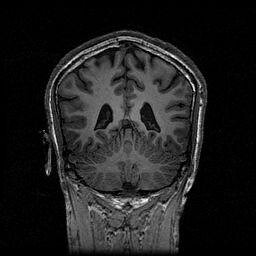I made my way to the 'Ajay Guest House' and up to its roof top restaurant overlooking the Ganges and found my buddy Josh, and after such a long, draining journey it was good to see him. Josh had moved to Hyderabad, India last May to work for the Indian IT organization Satyam and had taken a weekend break to come see Varanasi. We chatted for a few minuted before we were joined by a colleague of his, Ibanga, who had just wrapped up an internship at Satyam and wanted to see Varanasi before heading back to the US. Having all spent the day traveling we decided to call it an early night, but not before taking a night stroll along the Ganges. Things were quite eerie down at the water, a fair amount of smoke/mist, strange and intermittent spotlights, near and distance chanting, and half to full naked sadus, ascetics and devotees walking around in pseudo-trances, covered in white powder. One such group sitting at the main ghat (steps into the water) appeared to be eating what looked like literal (cow?) shit...that was enough for night one.
By the light of the next day it was easy to see that Varanasi is probably the filthiest city I have been to, in no small part thanks to the the giant piles of cow-pie everywhere (like green, slimy land-mines), the big piles of garbage that the cows eat, and people relieving themselves in any spot that struck their fancy. Surprisingly the stench isn't as bad as one might expect, or I've become desensitized. I have to admit that in the midst of all of this filth it was tough to peer through and see the religious importance of this area. After breakfast we wandered down to the water again and caught a boat to the other side of the river, which is almost entirely devoid of buildings (aside from small shacks), due to the monsoon washing everything away when it comes. The pollution of the river was astounding...it seemed like we were floating in a river of pure sewage, and yet on both banks people were wading in to wash clothes or themselves, brush their teeth, or relieve themselves, and apparently these people don't get sick, their bodies have adapted to the incredible pollution. At the onset of our trip had thought about taking a dip in the Ganges himself, but later decided against it. When we got to the other side, we had a tough time finding a spot close enough to shore to disembark and so Josh and I (being in sandals) decided to hold tight while Ibanga jumped across and had a look around before we headed back to the populous side.
When night fell we observed a ceremonial puja, an interesting experience of fragrant smoke, fire, flowers, singing, repetitive sound and motion and incessant, loud bell ringing. After an hour of this we decided it was time to go see the burning ghats...
The area where the bodies are burned was very eerily surreal; a filthy place of mud, ash, wood, and constantly busy untouchables working away...it felt like I was walking through a movie set. There were giant piles of wood all around and a dozen fires (bodies) in progress. Despite seeing the forms of bodies, quite apparent, I confess to not feeling much aside from slight sacrilege at being a 'tourist' in such a spot. We had a guide who explained things to us: the burning takes place within 24hrs of death. In the case of a parents death the eldest son has his head shaved, gets a registration number, dresses in white, washes the body in the Ganges and wraps it in preparation for burning. A pyre of wood is prepared by an untouchable and the body is placed on the pyre by the family. The eldest son lights some grass from the 'eternal fire' (apparently kept burning for over three thousand years) and walks around the body 5 times (to symbolize the make-up of the body: wind, water, fire, earth, spirit/ether) after which the pyre is lit. The untouchable then takes control of the fire. It takes a total of 3hrs for the body to burn but after 1 1/2hrs the skull is cracked open by the eldest son, using a bamboo stick, to release the spirit up to nirvana. At three hours all should be burned, however sometimes the chest of men and the hips of women may still remain. If these pieces remain they are removed by the eldest son and thrown into the Ganges. The burning continues 24 hours a day, 7 days a week, usually burning 300-400 bodies per day.
The next day Josh, Ibanga and I tried to catch the sunrise on the Ganges but we met with such heavy mist that we couldn't even tell where the sun was and were only aware of a gradual lightening of the sky. Josh and Ibanga took off that afternoon and I was left to explore Varanasi a bit more on my own.
About a month before I arrived in India I got an email from my friend Mijin, who I first met in Sarajevo, saying that she was also going to be in India in February. The day after Josh and Ibanga took off Mijin arrived in Varanasi and I gave her the 10 cent tour of the things I had seen the days before. I had only planned on overlapping my time with her there by one day, unfortunately due to all the trains to Agra being booked I ended up staying in Varanasi for 3 more days. I passed the time exploring the narrow alleys and trying out different restaurants (one of which had a welcome sign stating 'yes, we are less dirty' a good indicator of how dirty Varanasi is), while Mijin did a lot of shopping. After more time than I'd wanted in Varanasi I was finally able to get on a train to Agra and Mijin headed to Calcutta.
Photos: Varanasi
By the light of the next day it was easy to see that Varanasi is probably the filthiest city I have been to, in no small part thanks to the the giant piles of cow-pie everywhere (like green, slimy land-mines), the big piles of garbage that the cows eat, and people relieving themselves in any spot that struck their fancy. Surprisingly the stench isn't as bad as one might expect, or I've become desensitized. I have to admit that in the midst of all of this filth it was tough to peer through and see the religious importance of this area. After breakfast we wandered down to the water again and caught a boat to the other side of the river, which is almost entirely devoid of buildings (aside from small shacks), due to the monsoon washing everything away when it comes. The pollution of the river was astounding...it seemed like we were floating in a river of pure sewage, and yet on both banks people were wading in to wash clothes or themselves, brush their teeth, or relieve themselves, and apparently these people don't get sick, their bodies have adapted to the incredible pollution. At the onset of our trip had thought about taking a dip in the Ganges himself, but later decided against it. When we got to the other side, we had a tough time finding a spot close enough to shore to disembark and so Josh and I (being in sandals) decided to hold tight while Ibanga jumped across and had a look around before we headed back to the populous side.
When night fell we observed a ceremonial puja, an interesting experience of fragrant smoke, fire, flowers, singing, repetitive sound and motion and incessant, loud bell ringing. After an hour of this we decided it was time to go see the burning ghats...
The area where the bodies are burned was very eerily surreal; a filthy place of mud, ash, wood, and constantly busy untouchables working away...it felt like I was walking through a movie set. There were giant piles of wood all around and a dozen fires (bodies) in progress. Despite seeing the forms of bodies, quite apparent, I confess to not feeling much aside from slight sacrilege at being a 'tourist' in such a spot. We had a guide who explained things to us: the burning takes place within 24hrs of death. In the case of a parents death the eldest son has his head shaved, gets a registration number, dresses in white, washes the body in the Ganges and wraps it in preparation for burning. A pyre of wood is prepared by an untouchable and the body is placed on the pyre by the family. The eldest son lights some grass from the 'eternal fire' (apparently kept burning for over three thousand years) and walks around the body 5 times (to symbolize the make-up of the body: wind, water, fire, earth, spirit/ether) after which the pyre is lit. The untouchable then takes control of the fire. It takes a total of 3hrs for the body to burn but after 1 1/2hrs the skull is cracked open by the eldest son, using a bamboo stick, to release the spirit up to nirvana. At three hours all should be burned, however sometimes the chest of men and the hips of women may still remain. If these pieces remain they are removed by the eldest son and thrown into the Ganges. The burning continues 24 hours a day, 7 days a week, usually burning 300-400 bodies per day.
The next day Josh, Ibanga and I tried to catch the sunrise on the Ganges but we met with such heavy mist that we couldn't even tell where the sun was and were only aware of a gradual lightening of the sky. Josh and Ibanga took off that afternoon and I was left to explore Varanasi a bit more on my own.
About a month before I arrived in India I got an email from my friend Mijin, who I first met in Sarajevo, saying that she was also going to be in India in February. The day after Josh and Ibanga took off Mijin arrived in Varanasi and I gave her the 10 cent tour of the things I had seen the days before. I had only planned on overlapping my time with her there by one day, unfortunately due to all the trains to Agra being booked I ended up staying in Varanasi for 3 more days. I passed the time exploring the narrow alleys and trying out different restaurants (one of which had a welcome sign stating 'yes, we are less dirty' a good indicator of how dirty Varanasi is), while Mijin did a lot of shopping. After more time than I'd wanted in Varanasi I was finally able to get on a train to Agra and Mijin headed to Calcutta.
Photos: Varanasi








No comments:
Post a Comment